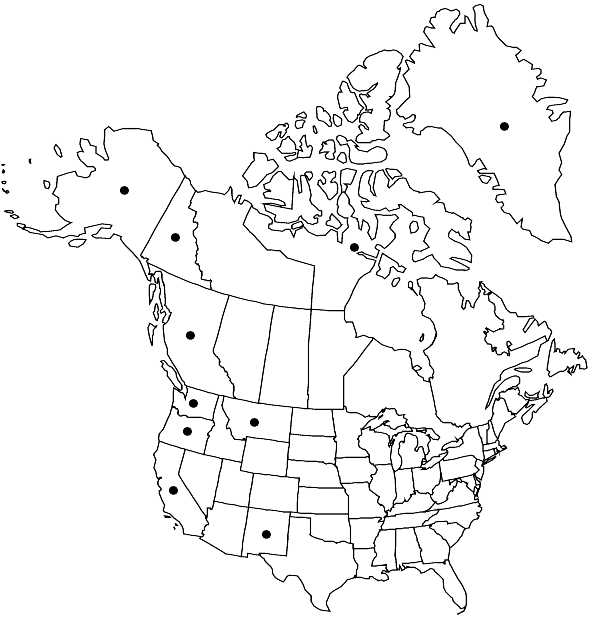Difference between revisions of "Pseudocrossidium obtusulum"
Bryologist 92: 533. 1989,.
FNA>Volume Importer |
FNA>Volume Importer |
(No difference)
| |
Revision as of 21:55, 16 December 2019
Stems to 2 cm. Stem leaves ovate to ovate-deltoid, 0.7–1.2 mm, distal margins once to almost twice-revolute; apex broadly acute; costa ending in an apiculus, adaxial surface of costa at mid leaf convex, with 2–3 guide cells; distal laminal cells 10–13 µm wide, 1:1. Specialized asexual reproduction occasionally present as spheric to clavate gemmae, 40–50 µm, borne on the adaxial surface of the costa, or as rhizoid-borne brood bodies. Perichaetial leaves not or weakly differentiated. Seta 1–2 cm. Capsule 1–2 mm, peristome of 32 linear, yellow teeth, straight or twisted counterclockwise a half turn, operculum conic-rostrate. Spores yellow, essentially smooth, 8–12 µm.
Phenology: Capsules mature in summer (Jun).
Habitat: Soil, calcareous outcrops
Elevation: low to moderate elevations 30-1100 m
Distribution

Greenland, B.C., Nunavut, Yukon, Alaska, Calif., Mont., N.Mex., Oreg., Wash., Europe.
Discussion
Pseudocrossidium obtusulum differs from P. revolutum (Bridel) R. H. Zander of Europe and Africa (absent in North America), by not or weakly differentiated perichaetial leaves, and cauline leaves ovate to deltoid, broadly acute, once-revolute, and revolute only in distal 2/3 of leaf. Discussions of the morphology and distribution of P. obtusulum in the New World have been published by G. R. Brassard (1971), P. M. Eckel et al. (1996), B. C. Tan et al. (1981), and R. H. Zander (1979). It has been collected as subfossil in the Yukon (J. A. Janssens and R. H. Zander 1980) and Vermont (N. G. Miller 1987). Fruiting material has been collected in Greenland—the peristome generally comes off with the operculum. A collection from Oregon (McIntosh 4939, UBC) has gemmae on the adaxial surface of the costa (as does P. revolutum). Didymodon brachyphyllus and D. nevadensis have somewhat the same appearance, but have merely strongly recurved distal laminal margins and an indistinct apex. This species has been collected widely in Alaska (B. M. Murray 1992), California (D. H. Norris and J. R. Shevock 2004), and Washington (T. T. McIntosh, unpubl.).
Selected References
None.
